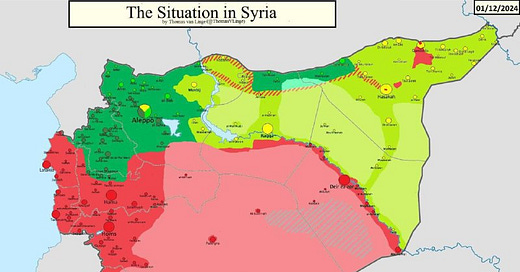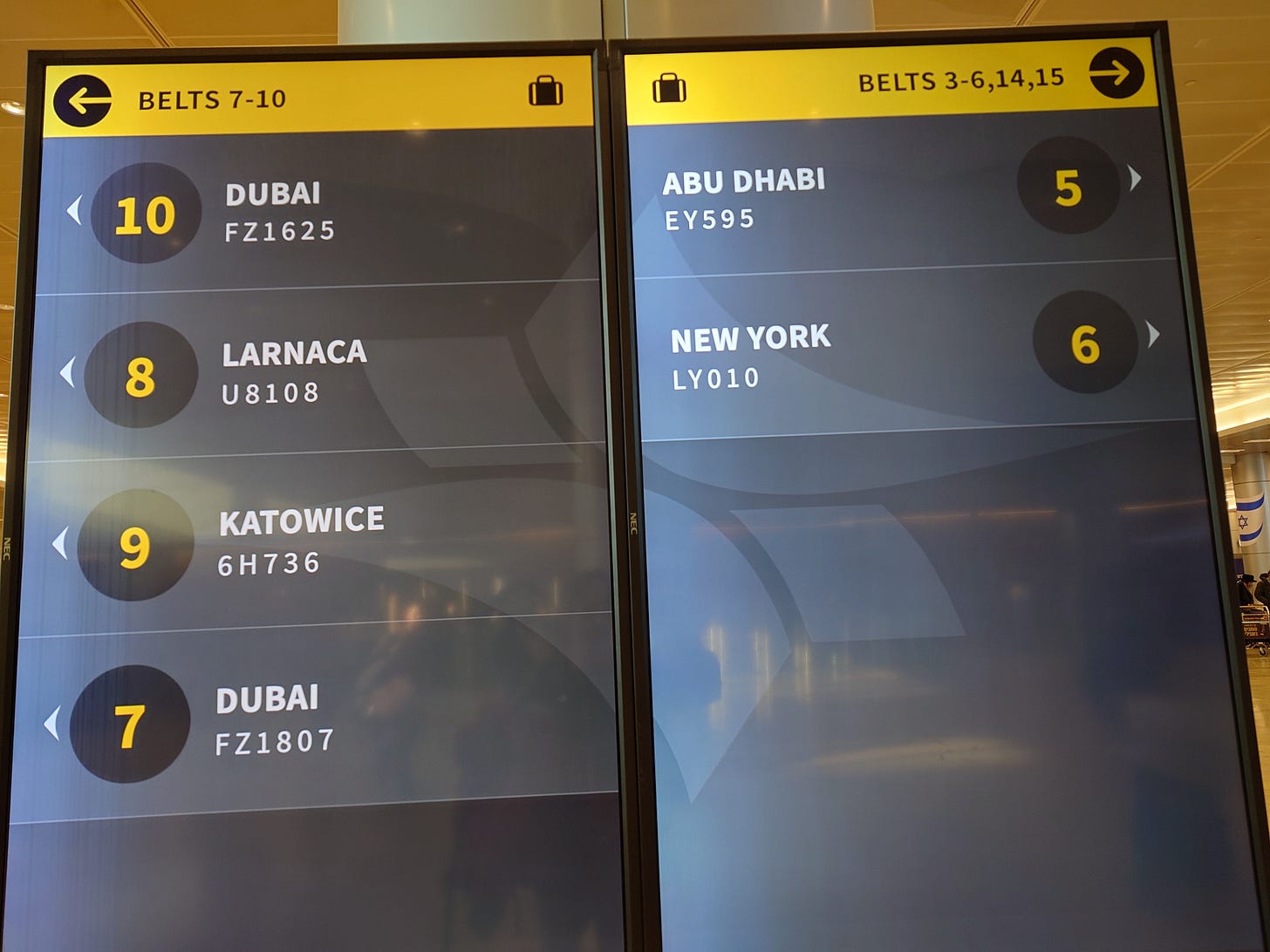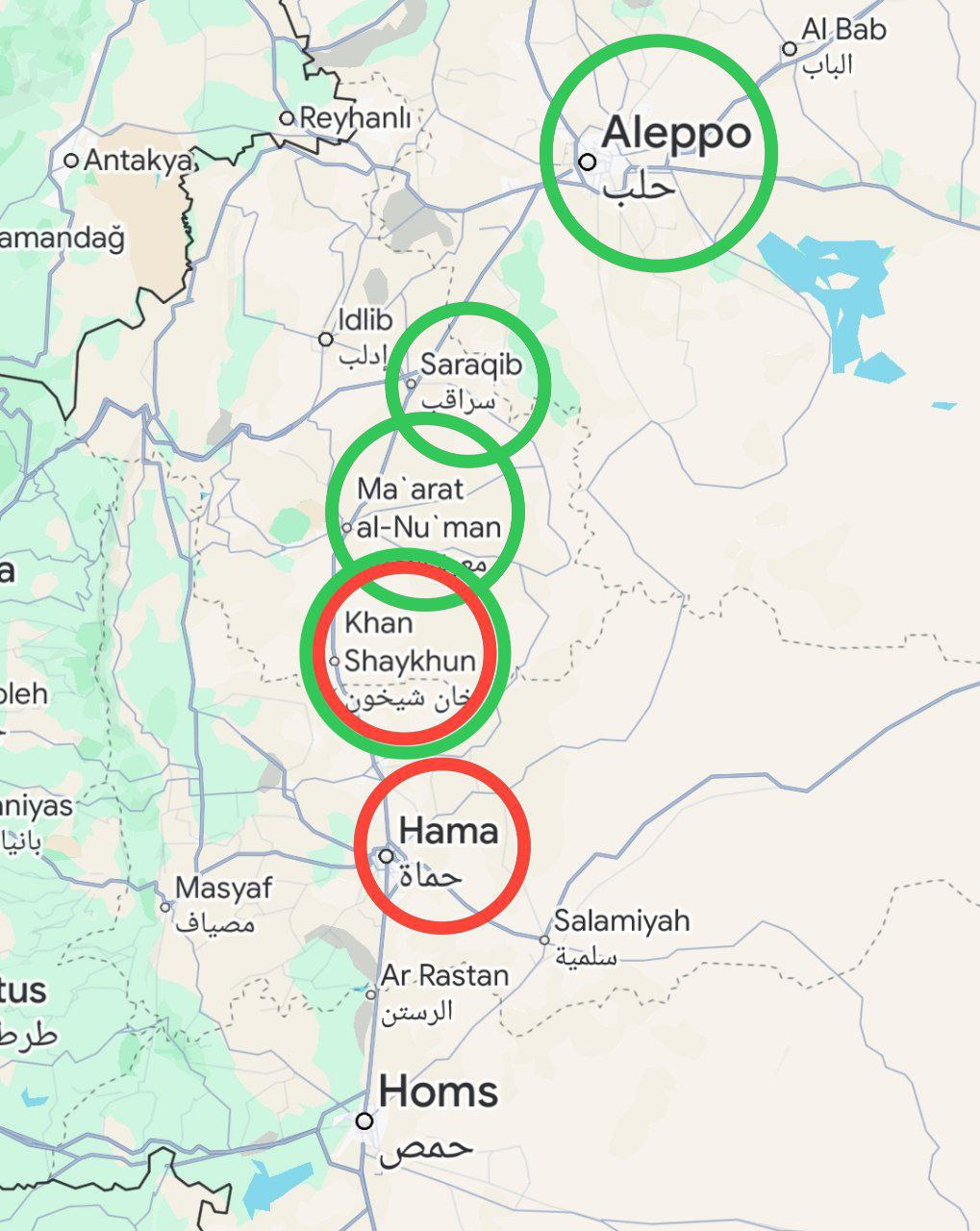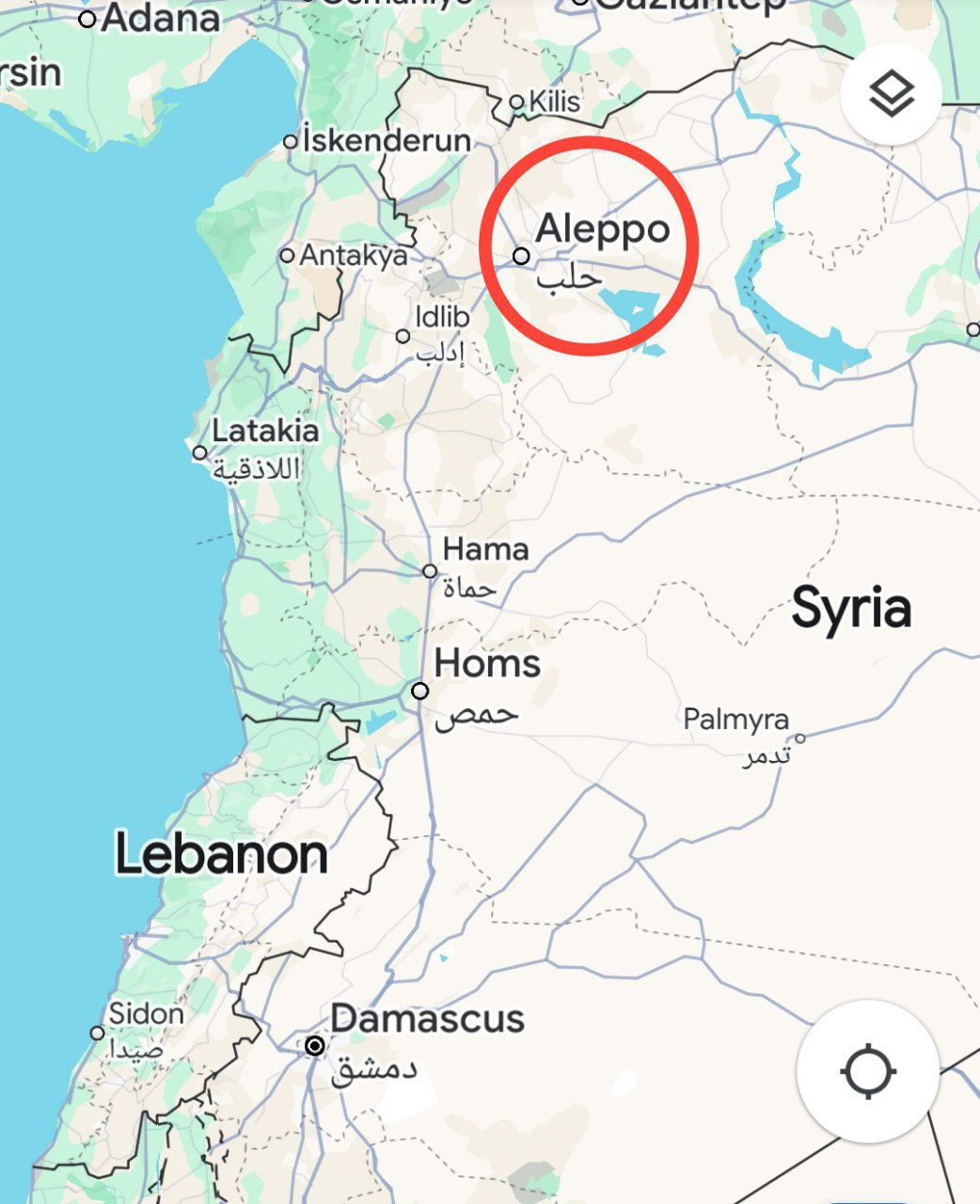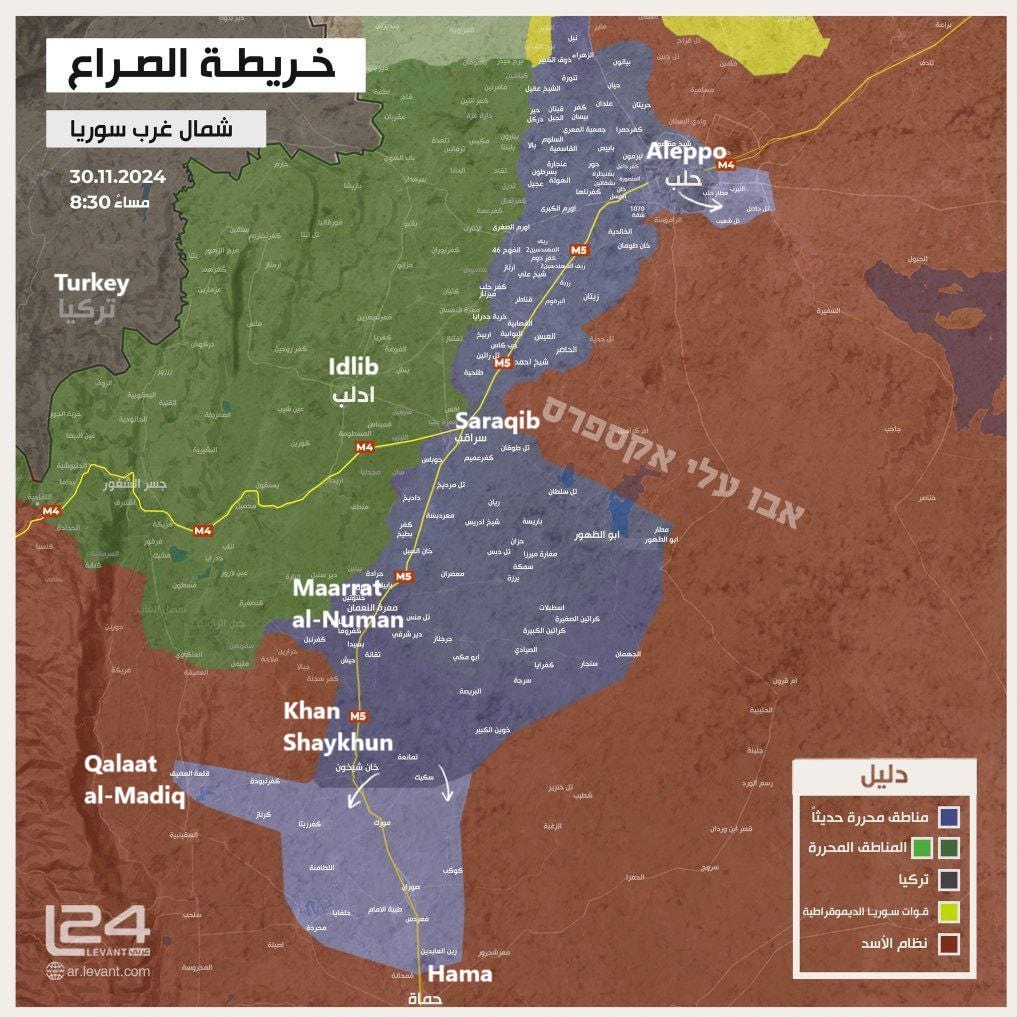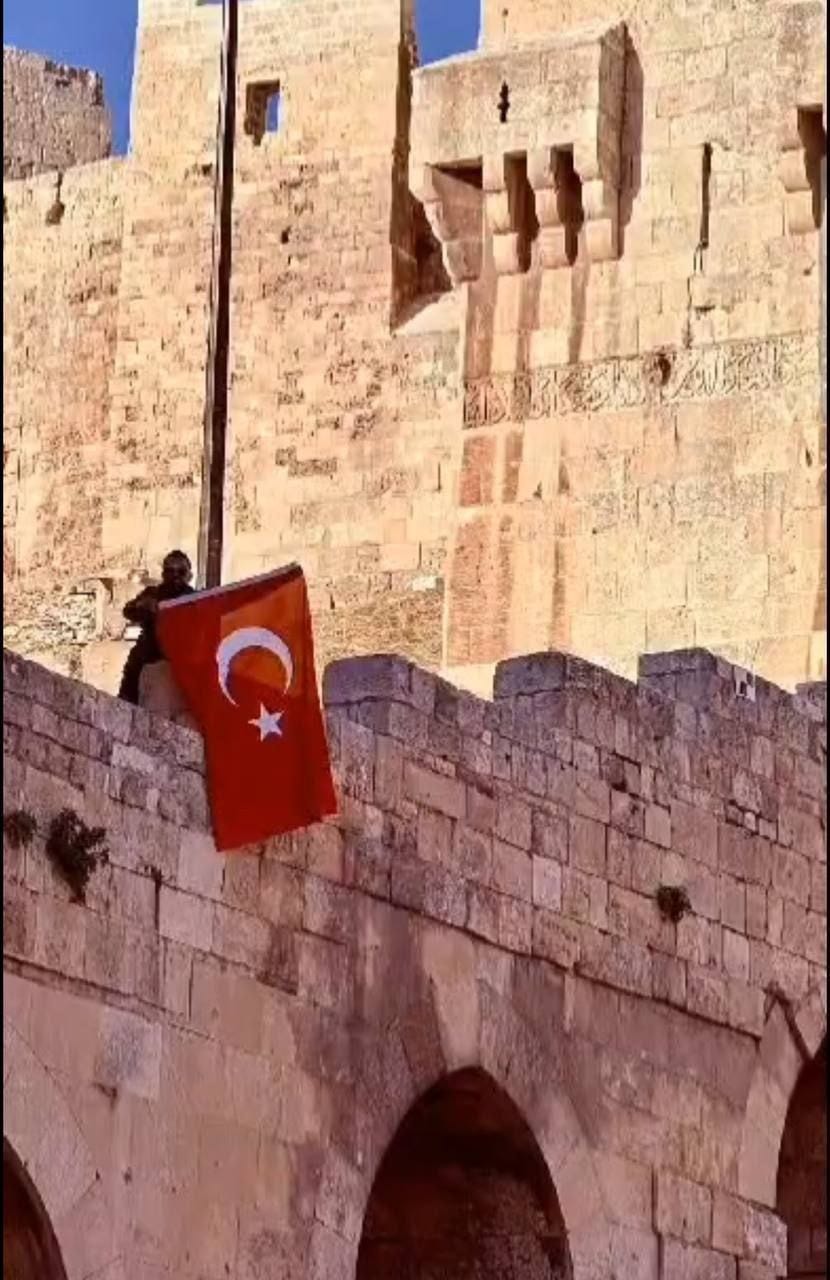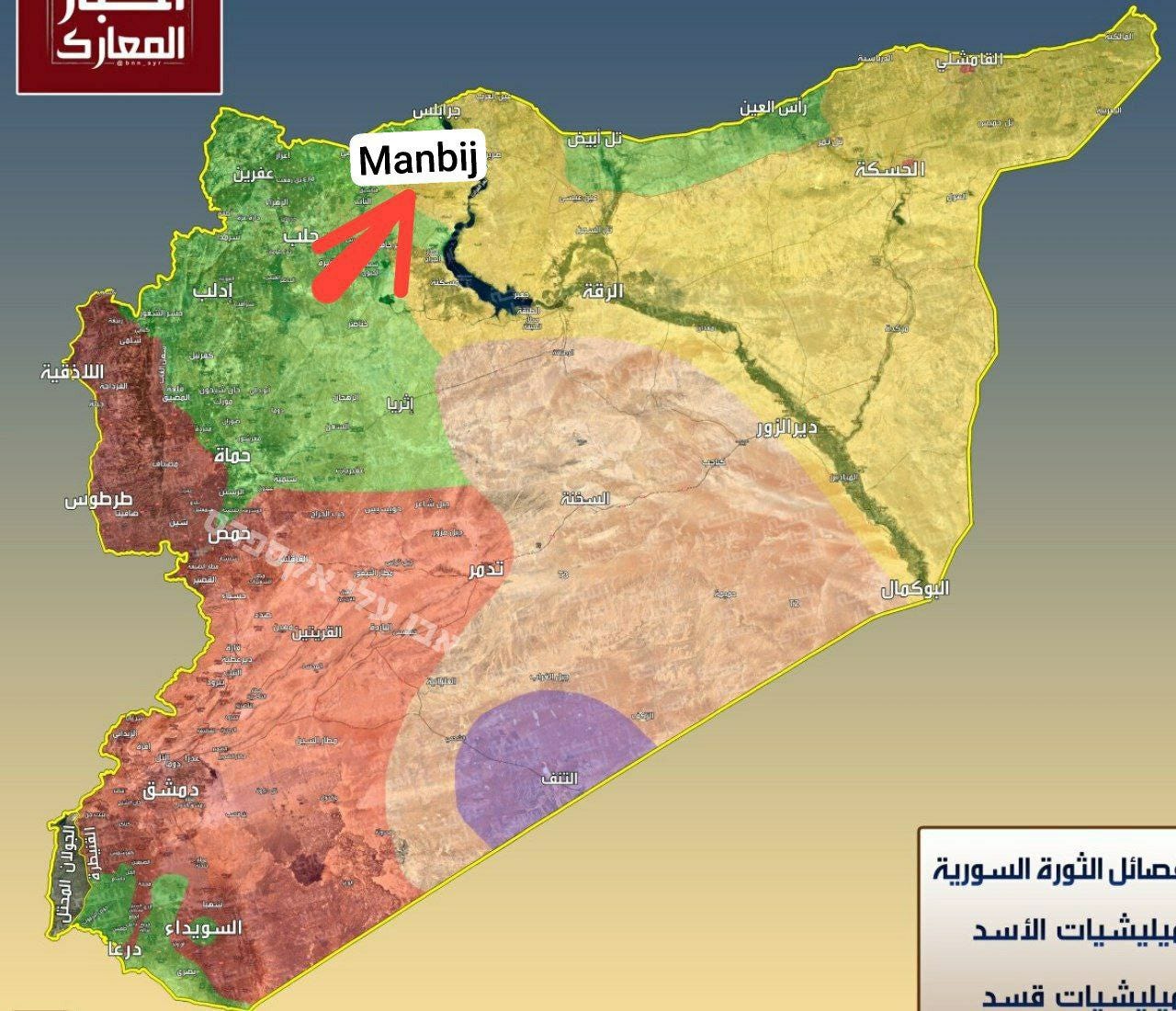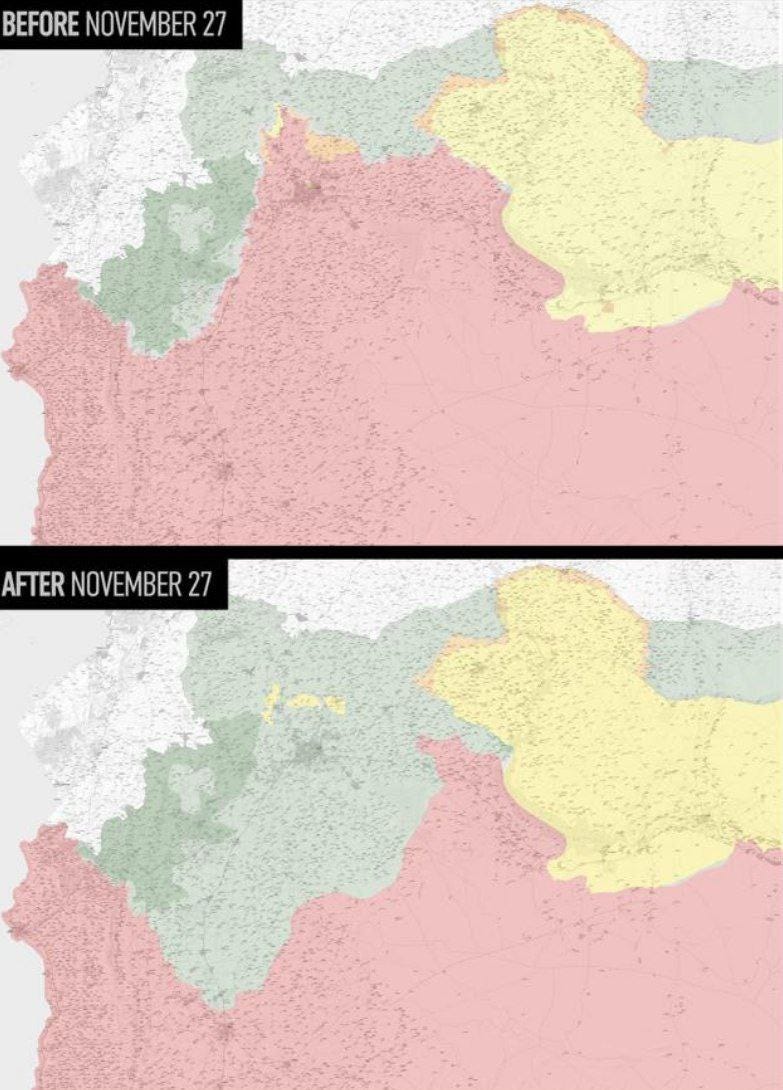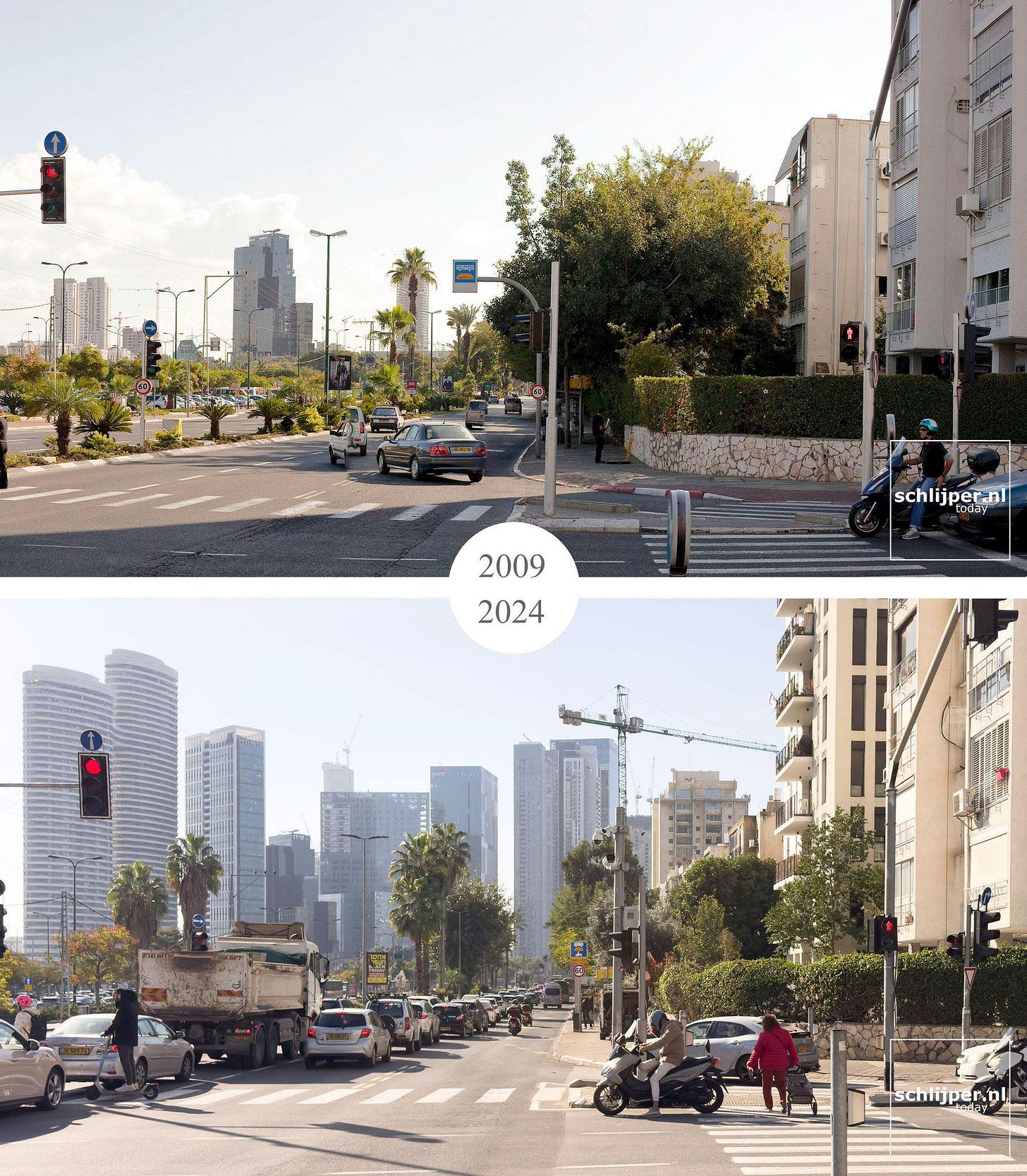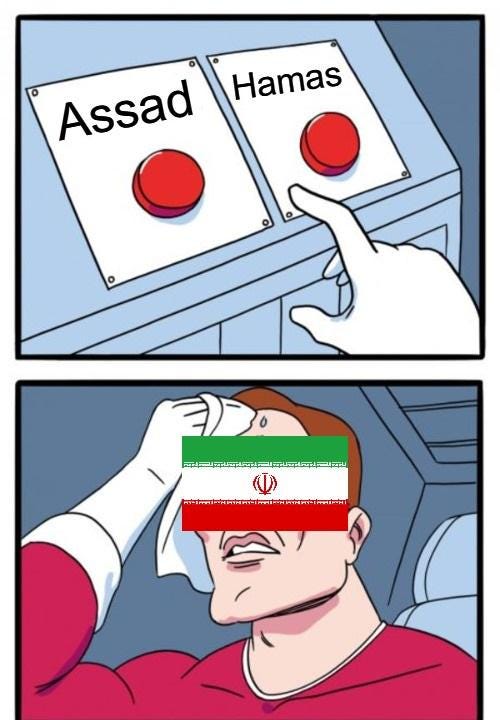First Time Here? Readers suggest starting with the expanded Gaza Explainer in #133 and #120.
Tags: 20 Min Read (blame Syria!); Syria analysis; Some Humor
Thanksgiving in NYC was great. But cold! Missing an El Al flight is no joke these days. (Don't ask!) Pop Quiz: What's today's backup airline between North America and Israel?
File under: Not your grandpa's Israel.
(Above: Flights that came in when mine did. Larnaca is Cypress, several flights go back and forth each day, it's a one hour flight. Katowice is a ski town in Poland, 100 km from Krakow. One of the two smaller Israeli airlines, Israir, flies there, mostly serving Israeli tourists going abroad. Although I understand there is also a medical school there, teaching in English, that attracts future doctors from around the world, including Israel.)
I had some feedback recently that some humor entries are hard to understand. I will try to add background. Pushback of all kinds is appreciated. As always, you can reply to any of these emails or contact me directly. Some recent notes (that arrived by email and Whatsapp):
Mail
That CUFI Discussion in #153
RE: CUFI [Christians United for Israel] vs. AIPAC — have you looked into how much each spends on campaigns/PACs? I wonder if there’s something to the claim that AIPAC has more influence on elections, even if they have [fewer] members.
In many respects, CUFI is a mirror organization of AIPAC. Its members do the "visit your representative" thing when they are in Washington. I believe CUFI members, if not CUFI itself, hops on/supports many AIPAC initiatives, including funding specific candidates.
Where does CUFI end and the larger Evangelical political gorilla begin? This is outside my scope. But CUFI has a big agenda (moving the U.S. Embassy from Tel Aviv to Jerusalem was their baby during #45).
Which organization is more effective... You know, I read a piece by a left-of-left thinker who said "Look, AIPAC isn't successful because it is big or amazing. AIPAC is successful because supporting Israel is part of the American hegemonic project. Take AIPAC and make it support Armenia, or some central African country, and it won't have any success. In other words, it is the American supremacy movement, which includes Israel as a Western proxy in the Middle East, that enables AIPAC's success, not AIPAC itself.
That is interesting, and resonates.
It is (perhaps?) adjacent to my pet interpretation of AIPAC: AIPAC is a stealth lobby for the military industrial complex. Its goal: Increased spend on American military hardware. (That is the essential result of its work.) In this model, when you think AIPAC think: Lockheed Martin (a weapons manufacturer). This perspective may be supported by AIPAC's "no judgement" system of supporting dishonest American and Israeli politicians. It doesn't have judgement because that's outside AIPAC's scope....
But I don't think a direct CUFI-AIPAC comparison is needed. CUFI doesn't have to throw political weight the same way as AIPAC. CUFI is part of the Evangelical agenda, and the Evangelicals throw a LOT of weight (more than AIPAC ever has, by my measure). CUFI’s size may be a way to measure the size of Israel on the Evangelical movement’s list of priorities.
In other words: We know Evangelicals sway U.S. elections at every level. CUFI is part of that world. CUFI matters.
But the American Left calling out Christian support for right-wing Israeli politicians and policies? Ain't never seen it.
ICC Warrants Discussed in #154
Raf in #154: "If some (two? eight?) senior people are sent to prison, even for long stints, that does not strike me as material, in the overall casualty count."
M.T. responds: Maybe, but if [the ICC] get[s] a few convictions, will they stop there? Might make it difficult for ex-IDF to travel abroad to many countries
Fair call. The ICC trial is an inflection point. I am not aware of an ICC tendency--so far--to criminalize an entire military. However, given the deep antisemitism in play and the shrill calls for a one-sided sense of "justice," we are in unpredictable water.
Would a real progressive be OK with, in extremis, losing a swath of military leaders to prison terms if that meant more peace-oriented heads would take over?
Or, would the imposition of external judgements, clearly manipulated by a large number of developing countries, result in a racially motivated military?
Context. Really
Why are the Assads hated?
Is it the 30,000 civilians murdered by Assad Senior’s army in Hama in 1982? Or one of the other Hama massacres? (In 1981 and 2012.)
Yes.
And much more.
Daraa
This city, in southern Syria, just fell to the rebels in the last 24 hours.
From Abu Ali Express:
It is impossible to talk about the war against Assad in Syria without mentioning Daraa in southern Syria. And it is impossible to mention Daraa without mentioning the Syrian boy Hamza al-Khateeb and the children who wrote the immortal sentence on the walls of Al-Arbeieen school in Giza (Daraa):
"It's (your) turn, doctor" (referring to the ophthalmologist Bashar al Assad [aka Assad Jr]).
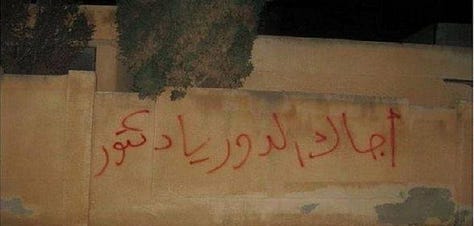
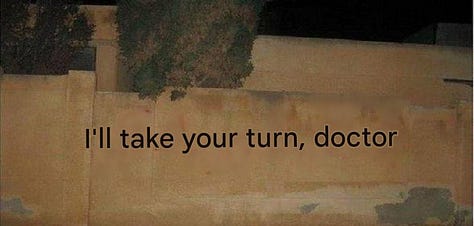
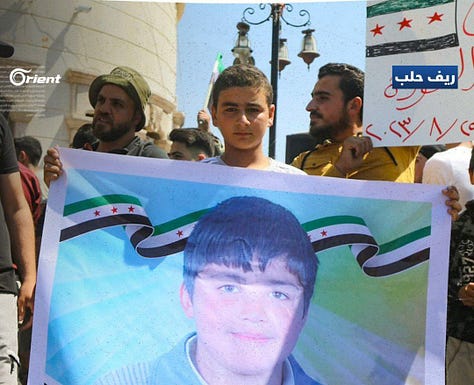
On the night of February 15, 2011, a number of children wrote protest graffiti against Assad on the wall of a school in Daraa after the "Arab Spring" had already succeeded in toppling a number of Arab rulers in the preceding period.
The graffiti particularly angered the Syrian security forces who pursued the children, arrested them and tightened the siege on the city of Daraa in an attempt to silence the protest.On April 29, the 13-year-old boy Hamza al-Khateeb participated in a demonstration against Assad in Daraa. He was arrested and his tracks disappeared. After three weeks his body was returned to his parents with severe signs of abuse (including the amputation of his genital organ and other body parts).
Hamza's father (who died last September) recorded the body and published the video which gained global circulation and drew comments from Hillary Clinton and other Western officials.The shocking video "lit the fire of the rebellion" and a widespread uprising against the Assad regime broke out that month all over Syria and led to the civil war that continues to this day and in which hundreds of thousands of Syrians have been killed [2/3-1 million deaths, 13 million displaced out of a population of 24 million -RZ]. A war that changed the face of the region.
Yesterday, when the city of Daraa, the cradle of the revolution, was liberated, many Syrians called for Hamza al-Khateeb’s picture to be hoisted instead of Assad's banner - because the boy’s revenge is complete and he can now rest in peace.
Dept of The Invisible
Items invisible in the Western media.
State of the State... of Israel
The observations shared here feel characteristic of the issues in Israeli society. Michael Starr writes: "I returned to The Jerusalem Post after being drafted for my second tour of duty in Gaza since the October 7 Massacre. Here's my experience."
The full article (PDF here). An excerpt:
Hamas seems to be collapsing. "By and large, they [Hamas] do not operate at night or the light of day, clinging even closer to the low visibility of dawn and dusk, whereas their operatives would once openly operate in daylight hours due to being able to escape underground after an attack. It appears that their tunnel networks have been greatly compromised, as they have had to travel along roads and weave between buildings.
Gaza is severely damaged. "The extent of the damage to infrastructure hasn’t been completely appreciated by the general [Israeli] public, and Israeli and international leaders will need to develop extensive plans to rebuild the territory. Whole neighborhoods have been leveled during direct combat, the search and destruction of tunnels and booby traps, and the establishment of defensible positions.
Gaza was not an "open air prison." "Our impression was not one of squalor but normal conditions. In rural areas, villas and mansions oversaw sweeping vineyards on one side and a view of the ocean on the other, and in urban areas, large schools, restaurants, and other facilities. The lost potential and degraded conditions in Gaza make Hamas’s decision to attack Israel and weaponize its territory - rather than develop what they held - even more of a shame."
The IDF is not conducting genocide: "The purpose of our operations was not geared toward the elimination of Gazan civilians. There were never orders to kill civilians wantonly, and there were debates on whether we had enough information to use deadly force and when it was legitimate to open fire. Civilians were allowed to pass by our positions along humanitarian corridors unmolested."
"These elements would not be found among a force that is devoted to mass murder or genocide. Civilian casualties are tragic, and unfortunately, they always occur in war, which is why such conflict should be avoided in the first place." [Emphasis by RZ]
Lebanon
There are a lot of photos like the above. Since the ceasefire came into effect, Hezbollah is catching up on funeral services. The truck above is all Hezbollah members. A very high percentage of casualties in Lebanon were Hezbollah. From the anecdotal data I watch, over 80%. Possibly 90%.
Postmark
The situation in Syria is changing so quickly... What should I do? Say nothing? The details here are, perhaps, not visible in the western press.
Syria
Recent events in Syria are a direct result of Israel's destruction of Hezbollah. Hezbollah and the Iranian infrastructure behind it both attacked Israel and in recent years helped Assad secure Syria by fighting off, brutally, the Syrian rebels. Israel's success in degrading Hezbollah and Iran's effort to resupply them opened a door for the rebels to operate. (Assad has always been dependent on support from Iran--largely via Hezbollah and Russia.)
Russia says they will start aiding Assad. But tied down as it is in Ukraine, does Russia have much to offer?
December 6: Sky News in Arabic claims from its sources that Russia has informed Assad that any intervention on its part will be limited because it has other priorities now.
Above: Rebels releasing prisoners from the Aleppo jail.
Revolutions often open prisons. In some situations, many of the prisoners are part of the rebel movement. And there are typically many whom the public would prefer remain behind bars... Revolution is not a pretty thing.
(Prisons have been opened in many other cities by now... the above is from six days ago!)
Above: The rebels in Aleppo are having a particularly good time inside offices that belonged to the Iranian militias: tearing down the Hezbollah flags, destroying Iranian symbols and stepping on the picture of Hassan Nasrallah.
Above: Aleppo governor's palace tonight: the rebels smash the statue of Hafez al-Assad, the father of the Syrian president.
Above: Toppling the statue of Hafez al-Assad, father of the Syrian president, located in al-Basel Square in western Aleppo.
~December 3: The rebels officially announce:
خان شيخون صديق
We captured Khan ShaykhunRebels captured Ma'arat al Nu'man, which is located about 20 km north of Khan Shaykhun.
The following strategic goal seems within reach: The city of Hama, which is 30 km away.
The speed of the conquests is unimaginable. It appears that Assad's army has collapsed.
Additionally:
Syrian media report that Assad's forces are fleeing the key city of Hama as rebels approach from the north (according to unofficial reports, the rebels have already reached the village of Suran, about 15 km north of Hama).
The rebels are advancing southward, and the Syrian army is retreating from the battle.
About Aleppo
A few words about the importance of the city of Aleppo, which is currently occupied by the Syrian rebels:
Aleppo is one of the oldest cities in the world. There is evidence of settlement in this area as early as the 11th millennium BC.
As of 2024, the city of Aleppo has about five million inhabitants, which make up a fifth of the inhabitants of Syria as a whole.
Aleppo is considered the economic capital of Syria and is also the capital of northern Syria.
The only more important city in Syria is the capital Damascus.
If the rebels, Assad's enemies, control the second most important city in Syria, it says a lot about the government's grip in the country. It undermines the government. This is a challenge to the dictator. If the rebels were successful there, there is no reason why they should not be successful in other places. The success there can arouse opponents of the regime in other areas of Syria - for example in southern Syria, which borders Israel, where the civil war began in 2011.
Aleppo has a rich Jewish history. The ancient synagogue of Aleppo was built between the fifth and seventh centuries CE. This was the oldest synagogue where Jewish prayer continued uninterrupted until the late twentieth century (when anti Jewish riots and pressure from the Assad regime pushed out the last Jews). The Israel Museum created a VR reconstruction of the great Aleppo synagogue. Here is an excerpt. More about the exhibit. To say nothing of the Aleppo Codex, one of the two oldest known copies of the Torah text, written circa 920 CE.
An updated map, showing the recent rebel advancements in northern Syria on appx December 4:
Color legend:
Red: Areas under Assad’s control.
Yellow: Areas under Kurdish control.
Green: Areas under rebel control (prior to the operation).
Blue: Newly captured areas in recent days.
Above: Syrian rebels took control of the military airfield of Kuweires, which is located about 30 km east of the city of Aleppo. The rebels also seized a Russian-made Pantsir air defense battery in Aleppo. Large ammunition depots of all kinds were seized. Heavy equipment, missiles, tanks, airplanes, helicopters.
Below: New in the arsenal of the Syrian rebels: The MiG 23
Below: Syrian rebels captured a Podlet-K1 radar system near the headquarters of Division 25 of the Syrian army in northern Hama.
This system serves as a critical component in Russia's S-300 and S-400 air defense systems, responsible for detecting low-altitude objects such as drones.
The system has a range of 300 kilometers and can track 200 objects simultaneously at altitudes of up to 10 kilometers.
A high-value capture--it diminishes the Syrian (and Russian) air defense capabilities in Syria.
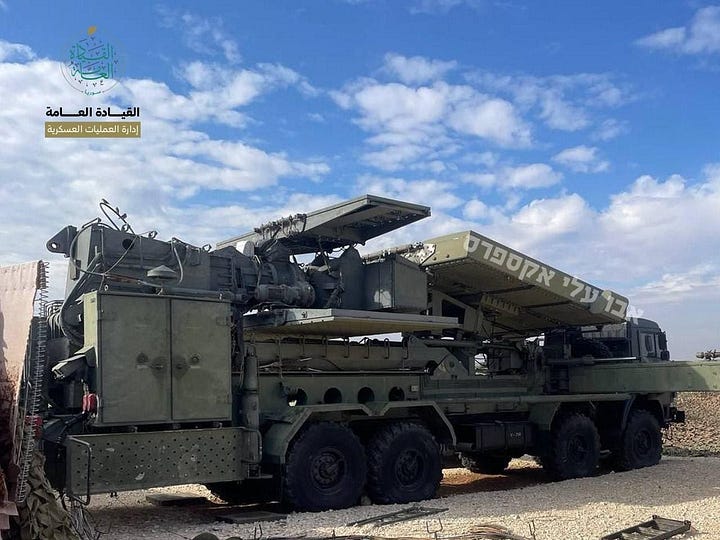
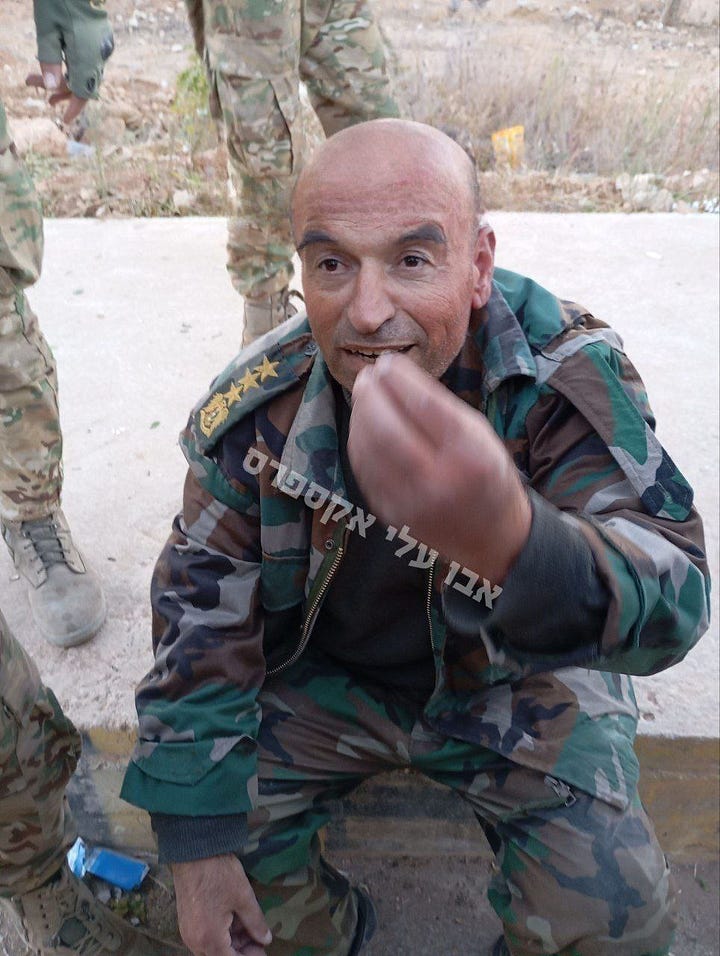
Above: Syrian rebels managed to capture Malek Hassan Mukhaibar, an Amid (Brigadier General) in Assad's army.
Mukhaibar was caught near the Syrian Army's laboratories in al-Safirah.
Available data points to systemic collapse of the Syrian army.
Rebels... and Curses...
Muslim fanatics, which the rebels are, now armed to the teeth with captured Syrian arms... are now attacking the Kurds.
I wouldn't be surprised if they attacked Israel in the coming weeks. Though I imagine Iran is a stronger target for them. Why? Because the Iranian backed Hezbollah massacred rebel communities during the Syrian civil war. Not what Israel is accused of in Gaza. Traditional massacres: Use a bulldozer to dig a huge pit, throw in families of rebel soldiers, and shoot them with AK47s. The rebels are likely to keep their focus on their actual, rather than imagined, enemies.
But in all cases, messianic religion is dangerous.
Sunnis against Shiites, this is the basis of the conflicts in the Middle East for hundreds of years. This is the usual order.
The Sunni Hamas that was supported by Shiite Iran and Shiite Hezbollah is the abnormal part of this whole Middle East equation.
Should Israel Care?
The rebels are, without a doubt, hostile to Israel. The positive aspect, for the region, is breaking Iran's control over Syria and cutting off the trans-Syria arms pipeline from Iran to Hezbollah in Lebanon. This benefits the region.
(Abu Ali Express) Hezbollah has suffered a defeat in Lebanon at the hands of Israel, and now the rebels are expelling Iran from Syria, cutting off the lifeline of what remains of Hezbollah in Lebanon.
However, chaotic environments where there is no government are prone to all kinds of strife. They are also vulnerable to manipulation by external actors.
An area many times larger than Gaza and southern Lebanon is now in chaos.
Abu Ali Express writes:
Syria: What's Next? Should Israel Be Concerned?
I must admit that I’m quite amused by the discussions among Israelis on social media regarding what would be better for Israel in Syria: the continuation of Assad’s regime or a rebel-controlled Syria, where many factions lean toward ISIS and al-Qaeda.
No one is asking for our opinion, and Israel cannot stop the rebels in Syria. All we can do is observe, learn, and draw conclusions.
For Israel, the Syrian rebels are the most effective ground force to meticulously and efficiently clear out all remnants of Iran and Hezbollah from Syria. They are far more effective (and ruthless) than the Lebanese army, which was tasked with clearing Hezbollah from southern Lebanon. The rebels face no constraints.
If Israel perceives a specific threat, such as strategic weapons falling into rebel hands, it can respond (as it has reportedly done recently, according to foreign sources).
[Invisible to most Western eyes --RZ] Between 2016 and 2018, Israel provided significant assistance to the rebels in southern Syria, including financial aid, equipment, and medical support (even treating the wounded in Israeli territory). This was part of the IDF’s “Good Neighbor” operation. It’s reasonable to assume Israel has a solid foundation for dialogue with the rebels in southern Syria.
In the immediate term, the rebels have no reason to see Israel (or even Russia) as an enemy. Their primary goal right now is to establish stable governance within Syria’s current borders. As for the future—everything is open.
In short, Israel has limited options and little to worry about at the moment, apart from safeguarding its key interests against this emerging new force in Syria. For better or worse.
The Turkish Connection...
Below: The ancient Aleppo citadel with Turkish symbols - so that there will be no doubt as to who is running the events here behind the scenes.
It was not for nothing that the Iranian foreign minister came to Turkey two days ago. He was asking for mercy for Assad and the Iranian militias in Syria.
December 6: Turkish President Erdogan addresses the recent progress of the rebels in Syria:
"Idlib, Hama, Homs, and of course, the goal is Damascus. The opposition’s progress continues, and we hope it continues safely and without special incidents."
The chaos in Syria reminds me of the chaos in Iraq in the years after the U.S. invaded. The U.S. invasion caused Iraq to morph from arch enemy of Iran to Iranian proxy, thus greatly expanding the Iranian sphere of influence. In the case of Syria, we can see it as Turkey seizing a chance to expand its sphere of influence, to counter Iran's.
Hama and southern Syria have all fallen to the rebels. Word is that the Shiite militias of Iraq, that had been dispatched to support Assad, are heading back to Iraq.
Russia has called for all citizens to evacuate Syria
Multiple reports of Assad forces pulling back to Damascus to defend the "main citadel"
The rebels captured at least 7 MiG 21 aircraft at the Hama military airfield.
The Russians are moving one of their S-400 air defense batteries and a Tor-M2 system from the Masyaf area (where they were placed in 2017) towards the port city of Latakia (where Russian vessels are ready to evacuate).
The New York Times: Iran has begun evacuating senior officials and military operatives from Syria
There are rumors, unconfirmed so far, that Bashar al-Assad, the president of Syria, has landed in Tehran.
The German "Bild" newspaper: the family of President Bashar Assad fled to Russia.
The IDF has increased its presence on the Golan Heights, as Syrian rebels control the other side of the fence now…
Above: Map as of December 6: Notice the green area under the control of the rebels in southern Syria.
Soon the rebels will launch an offensive towards the Kurdish city of Manbij, north of Aleppo (marked with a red arrow).
Legend:
Green - rebels
Red - Assad
Yellow - Kurds
The Firehose...
As this post is written, new maps are put out twice a day showing areas of control...
Assad (in red) controls the central cities from Hama to the south (Damascus is in the south).
The rebels are the green color that is growing around Aleppo.
The Kurds - the yellow area.The part in light red is mainly a desert area under Assad's control. The part in bright green that is "wrapped" in that part of the desert is the American base in Tanf located on the border triangle of Syria - Iraq - Jordan, where there are rebel forces supported by the USA - this area is forbidden to enter and the USA enforces this with fire.
To show the progress, this map of northern Syria:
The map of control in Syria and the changes in Aleppo province - before Nov 27 to now.
Red - Assad
Green-rebels
Yellow - KurdsAfter the capture of the city of Hama [~December 6], the rebels now control six military airfields and one civilian airport:
Aleppo International Airport - civilian
Nayrab (next to Aleppo) - military
Kuweires - military
Abu Dhuhur - military
Taftanaz - military
Minaq - military
Hama - military
That's a lot of infrastructure... in the hands of the same kind of folks who brought us 9/11, Hamas and 10/7.
Jenin: West Bank
The Palestinian Authority's police and members of Palestinian Islamic Jihad are shooting at each other. Some number of firefights. Some number of casualties.
Gaza
With all the Syria and Lebanon craziness.... yes, there is still a war in Gaza. Here we are, and Hamas is still setting up rocket launchers in humanitarian zones:
IDF: Earlier today, the IAF, with the direction of the Intelligence Directorate struck a ready-to-launch launching site, directed toward southern Israel, in the Humanitarian area in Deir al Balah.
After the strike, rockets were seen flying from the launching site.
Tunnel Trivia
Some excerpts from an essay in the Modern War Institute:
IDF investigations and captured Hamas documents produced reports that it took Hamas a year to dig one kilometer of standard tunnel at a per-kilometer cost of $275,000. A number of factors—size, type, and function, for examples—can raise the costs well beyond that of a standard mobility tunnel. The variety of tunnels in Gaza makes it difficult to estimate the underground network’s overall cost, but Hamas reportedly spent $90 million to build just three dozen tunnels in 2014, and some analysts place the network’s total cost at over $1 billion.
In one attempt to combat Hamas’s use of their tunnels, the IDF procured and deployed what was reported to be at least five industrial pumps to push thousands of cubic meters of water per hour into the tunnels to literally flush Hamas fighters out of them. The flooding had minimal impact. In one case, as one IDF officer I spoke to during a research visit told me, it took two weeks for a small Hamas tunnel to fill before the IDF finally saw Hamas fighters on the surface where they could be targeted. Due to the tunnels’ porous concrete lining, the water simply drained out of them. Some tunnels were even built with drainage holes in them, while in others blast doors complicated the process. Flooding had little impact and was too time-consuming to use as a primary method to force Hamas fighters out of their tunnels. And ultimately, flooding would not destroy a tunnel.
Reports show that to demolish just one kilometer of tunnel requires fifteen metric tons of TNT placed inside the tunnel. The amount of TNT needed for tunnels Israeli forces discovered in Gaza quickly exceeded their supplies of liquid or military-grade explosives like composition C-4. They therefore primarily relied on a field-expedient method of using both their own stockpile as well as captured Hamas explosives designed for other uses such as antitank mines to string together along tunnels.
The harsh reality is that there is likely not enough supply of explosives or enough time to destroy all the tunnels in Gaza. To find all the tunnels and then destroy them would potentially take years. The IDF seem to be focusing limited resources on destroying the tunnels that provided Hamas with the most military value to survive or conduct attacks against Israel.
Above: A video summary of the investigation into the circumstances of the deaths of six hostages in a tunnel in the Khan Yunis area. 830 meters long, 20 meters deep.
Good News Department
Tel Aviv...
Below: Tel Aviv, Namir St: 2009 vs 2024
Below: Tel Aviv: Start of Rothschild Blvd: 2009 vs 2024 (This is just a few blocks from my apartment.)
(Photos credit: @schlijperisrael c.f. #beforeandafterTLV)
First Muslim woman appointed deputy head of United Hatzalah branch
Excerpt from the full article:
Doa Al Aubra, a 30-year-old primary school teacher from Rahat, became the first Muslim woman to be appointed deputy head of a United Hatzalah branch this week, the organization announced on Monday.
Aubra, who joined UH in 2022, will serve as deputy head of the Rahat branch.
Aubra lost her mother in a car accident 20 years ago and cited historically long ambulance response times in her community as the motivation to become involved in emergency medical services.
“At first, people thought it was strange for a religious woman to volunteer in this way,” Aubra said. “But over time, they realized how important it is, especially when the patient is a woman.”
Railway Stations Reopen
s
Relief Area
Alef
[Iran can't decide: Support Hamas or support the Assad regime. One leg of support for Hamas goes through Hezbollah. But Hezbollah, which would normally be fighting on Assad's side in Syria's civil war, has been severely degraded by Israel. What to do?]
Bet: Comparing Al Jazerea with the toxic Israeli Channel 14 (considered the Israeli Fox News)
Incitement against the IDF and its officers
Mocking the IDF's Chief of Staff
Roots for the disbandment of the Sayeret Matkal (a Special Forces unit)
Supports the transfer of Qatari money to Hamas
Broadcasts in Israel
(Why would a right wing, militaristic media outlet--Israel's Channel 14--call for a storied special forces unit to be disbanded? The "great" thing about the stream-of-angry-consciousness-right-wing-media is that they attack everything from every angle. In the case of Sayeret Matkal, I imagine Channel 14 has blamed them for not preventing October 7, for not rescuing all the hostages and for failing to kill Sinwaar a year ago and much more. They make these insane claims at the same time as claiming that Israel can achieve magical-military-victories X, Y and Z [make up whatever you want here], if politicians cowed by the "Left" would let Sayeret Matkal "do its job." There is pain tolerance test where you put your fist into a bucket of ice water. The longer you stay in, the higher your tolerance. I imagine a "sanity solidity challenge" where you watch Channel 14. I do from time to time. It's insane. It makes One America News look like Sesame Street.)
Gimmel
An exiled Syrian, an opponent of Hezbollah, mocks reports that Hezbollah's Radwan Force will come to assist Assad's forces against the rebels in Syria... At most, Umm Radwan will come... Avichay doesn't allow it! He imposed a curfew on Hezbollah
(Referring to Colonel Avichay Adraee, IDF Spokesperson in Arabic -- an Arabic speaking Jew [of Syrian and Iraqi Jewish communities], who has appeared many times in this blog and is heavily referenced by Arab media--satirical and serious.)
Dalet
Syrian rebels looking for instructions on YouTube on how to fly their newly-acquired helicopters.
(I present this as satire, but it isn't really. It's real. The guy in the helicopter talks about what he is watching on YouTube to figure out the machine. Muslim fanatics now sit on mountains of advanced arms and are using YouTube to figure out how to operate the stuff.)
Hey: Syria Today
(That is the head from a statue of Hafez al-Assad, AKA Assad Senior, father of the current Assad, brutal dictator over Syria, whose rule ran from 1966-2000.)
Vav
Future Gaza math textbook:
If $275,000 can build one kilometer of tunnel or send four people to college and medical school, how many doctors did Gaza lose when it built 100 kilometers of tunnels under Rafah?
As I write these words, Damascus is under attack. It appears rebel cells were already in place, waiting to be activated. The rebels have asked members of the Syrian military to stay home and not fight. Events are moving swiftly. This is what happens when regimes become brittle. Whether this triggers the fall of the Iranian regime, I'm not sure.
Something I like about living abroad is dodging 1-2 months of Christmas music. The closest thing I've seen here is that the classic Channukah food, the jelly donut, goes on sale about a month before Channukah starts:
I can live with that.
I visited the sports complex at Tel Aviv University the other night. It was nine PM. There are three large pools. In the locker rooms, there were more guys speaking Arabic than Hebrew.
To Peace,
Raf
(Thank you A.K., M.T., E.D.)
